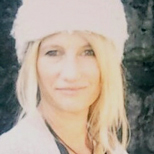As a simple example of fast thinking, Kahneman offers the math problem 2 + 2. The number 4 flashes to mind without having to ponder or calculate. Other examples include an instinctual comprehension of facial expressions, understanding simple sentences and driving a car on an empty road.
An example of slow, or critical, thinking involves the calculation 17 x 24. “If you do carry out that multiplication, it is a deliberate act,” Kahneman said in a lecture at the Arthur M. Sackler Colloquia on the Science of Science Communication in May 2012. “It is intentional. It is effortful. It involves mental work.” Other examples include focusing on one person’s voice in a crowded room, filling out a tax form and checking the validity of a complex logical argument.
“To the degree that one can recognize his or her own tendencies to engage in biased information acquisition — especially as the political context around a given issue becomes polarized — one may be better equipped to override automatic processing rules,” Bolsen says.
“Most of the beliefs, feelings, decisions and responses that describe us come to us very quickly, without what you might call thoughtful reflection,” says Arthur Lupia, a political science professor at the University of Michigan. “Critical thinking, per se, is the exception to a rule.”
Fortifying Ourselves
“[I]f we are willing, how exactly do we go about fortifying ourselves against these biases?” asks Columbia Business School professor Sheena Iyengar in her book The Art of Choosing. We have to be willing to make ourselves uncomfortable, Iyengar posits, by vigilance, persistence and a healthy dose of skepticism. “Ask yourself how you arrived at a particular preference. Were you overly influenced by a vivid image or anecdote? Did you discard an option too quickly because it was framed as a loss? Is it possible you imagined a trend or pattern that doesn’t really exist? Try to find reasons not to choose what you’re immediately drawn to. Gather evidence against your own opinion.”
“Understanding the motivation behind a particular source of information can reveal much about its trustworthiness.” — The Age of Propaganda
While Iyengar’s focus is on evaluating how we form our own opinions, authors of the book The Age of Propaganda list several questions one can ask when evaluating information from others: “What does the source of information have to gain? Are there other options and other ways of presenting these options? What are the arguments for the other side? … Understanding the motivation behind a particular source of information can reveal much about its trustworthiness.” The Foundation for Critical Thinking’s Mini-Guide to Critical Thinking and Purdue University Library’s handout Evaluating Information Sources similarly offer advice on how to employ critical thinking.
During graduate school, I developed a curriculum for teaching college students how to evaluate the reliability of information. In one exercise, students read a book chapter, magazine article, website article and peer-reviewed journal article, and answer these questions in a spreadsheet that ranks them according to their reliability:
- Are the authors’ names and credentials listed on the publication?
- Does the information source provide more than one viewpoint or hypothesis?
- Are specific studies mentioned or cited in the text? (Do not give a Yes answer if the article contains general phrases like “studies indicate” or “research shows” unless the article/source explicitly mentions a specific study and researcher mentioned.)
- Does the paper test a prediction? (Usually only peer-reviewed academic articles do, and they get higher points.)
- Are the authors trying to persuade you to accept a particular viewpoint?
- When was it published? (Older publications receive fewer points.)
- Is the article or website sponsored by a company or by advertising?
- Do the authors blatantly or implicitly insult other perspectives?
- Does the perspective presented seem exaggerated or extreme?
- What is the purpose of the publication? (Is it intended to inform/share data, disclose information, persuade, sell or entice?)
Scientific papers are considered highly reliable because the scientific method is explicitly designed to remove biases from investigations of the natural world. Developing a hypothesis, putting it to the test, running statistics on the results and then having a paper reviewed by one’s peers before publication all work to keep human biases out of scientific findings. While mistakes occur, history shows that the scientific process reveals reliable truths about the natural world.
Ensia shares solutions-focused stories free of charge through our online magazine and partner media. That means audiences around the world have ready access to stories that can — and do — help them shape a better future. If you value our work, please show your support today.
Yes, I'll support Ensia!

This is a good article. I think as a nation, people have gotten so used to everything provided for them fast. Not enough time, not enough patience to look things over.
The mini critical thinking guide and the evaluation of information sources provided by Purdue are great tools for coming to an educated conclusion on sources.
Sadly, I also must get myself off of autopilot and realize that there is plenty of time to read, if you want to make time.
Thanks for the good read!
-J